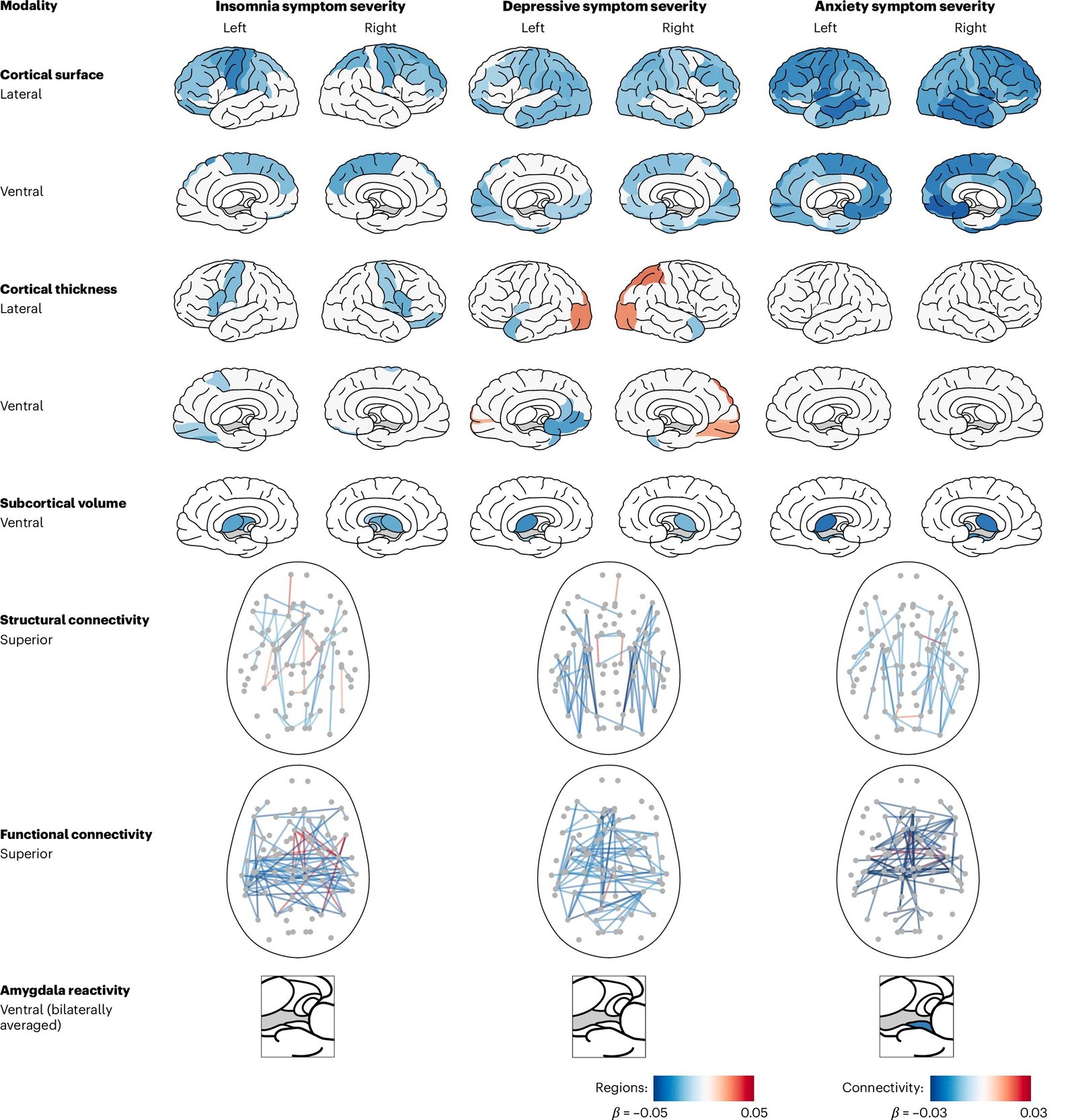Recent research from the Netherlands Institute for Neuroscience and Vrije Universiteit Amsterdam has identified key similarities and differences in the brain structures of individuals suffering from insomnia, anxiety, and depression. This study analyzed brain scans from over 40,000 participants in the UK Biobank and was published in the journal Nature Mental Health.
Insomnia, anxiety, and depression rank among the most prevalent mental disorders, often co-occurring and complicating treatment strategies. Current treatments frequently yield only moderate success, with many patients experiencing recurring symptoms. This underscores the need for innovative approaches to treatment.
The researchers, led by Siemon de Lange, Elleke Tissink, and Eus van Someren, examined various brain aspects such as the structure and connectivity of brain tissue. Their findings revealed that all three disorders share marked reductions in the surface area of the cerebral cortex, smaller thalamic volumes, and diminished connectivity between different brain regions.
However, the study also highlighted distinct brain abnormalities associated with each disorder. For instance, individuals with severe insomnia showed smaller volumes in brain regions linked to reward. In contrast, depression severity correlated more closely with a thinner cerebral cortex in areas connected to language and emotion. Anxiety was found to be more severe in conjunction with reduced amygdala reactivity and weak functional connectivity involving regions that regulate dopamine, glutamate, and histamine, which are vital for communication in the brain.
Despite these differences, the researchers identified that the affected regions are part of a broader circuit, specifically the amygdala–hippocampus–medial prefrontal cortex circuit. This suggests that while the disorders have unique characteristics, they may also share underlying vulnerabilities within the same neural framework.
Tissink emphasized the importance of investigating insomnia alongside anxiety and depression, as it is often overlooked in existing research. “This is the first comprehensive investigation of all three disorders on such a large scale. The high rates of comorbidity indicate that individuals may experience these disorders at different stages of life or simultaneously,” she noted.
The researchers aim to explore why treatments for insomnia sometimes alleviate symptoms of depression. By addressing these underlying mechanisms, they hope to discover new avenues for research and create more effective treatment options.
This groundbreaking study marks a significant advancement in understanding the relationships between insomnia, anxiety, and depression, potentially leading to improved therapeutic strategies for those affected by these challenging conditions.



